Instruction
Let your body speed determine your grip and ball positioning
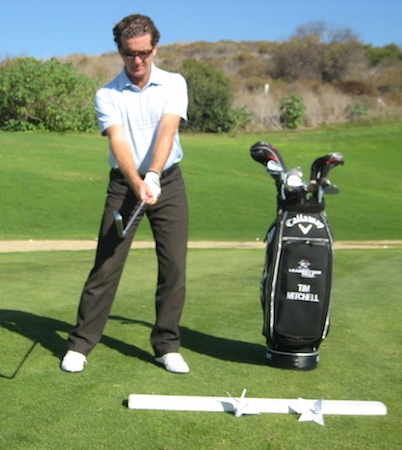
One of the most frustrating things for golfers is attempting to apply golf theory to their own specific needs. It’s a challenging task, because so much of the information is conflicting.
Even the simplest questions can be difficult to comprehend. For example, where should I place my hands on the club? Where should the ball be positioned in my stance? Theory states that you should place your hands on the club in a “neutral” position so that the club face is statically sqaure at the address position.
Theory also states that ball position varies based upon the club that is being swung. Starting with the longest club, the driver should be positioned somewhere near the front heel. As clubs get shorter, the ball position gradually moves farther back. The sand wedge, or the shortest club, is positioned somewhere toward the middle part of your stance.
If theory is absolute truth, how can David Duval (ball position forward, hook-faced grip), Nick Price (neutral ball position and grip) and Corey Pavin (ball position back and slice-faced grip) play world-class golf and win major championships with three different variables of ball position and grip positioning? They have found a way to match up their own ball position and grip to their personalized dynamic technique. You can too, by applying the information below.
The most relevant factor that determines the answer to these two questions is how much your body is facing the target at impact. Let’s start with ball position. The more your body faces the target, the more the bottom of your swing should be near your target foot. Think of baseball players: They always try to hit the pitch toward the front part of the plate. If you look at their body positioning, their chest is frequently aimed between the second basemen and the shortstop. Of course a baseball player is hitting the ball well forward of where a golfer does, however the relationship between body positioning and ball contact is very similar for golf.
So how do we relate this information to the golf swing? To find your ideal ball position, get into your golf posture without a club and swing instinctively, only with your non-target hand. Strike your golf bag and hold your body positioning at impact like the photo shown below. Take note of the following hip and chest characteristics to determine where your ball position should be.
Photo 1: Hips and chest open to your body line at address equals a ball position forward of “ideal” theory.
Photo 2: Hips open but chest parallel to your body line at address equals a middle ball position, or “ideal” theory ball position.
Photo 3: Hips square but chest closed to your body line at address equals a ball position back of “ideal” theory.
After identifying your ideal impact position and ball position, it’s time to determine which grip most effectively will help you square up the club face at impact. In simplest terms, the ideal location for your forearm to rotate correctly and square up the club face to your intended target line is when your backswing-side arm passes the middle part of your body. Because we all have different body speeds that produce different ball positions at impact, different grips or club face angles are needed to square up the club face.
To apply this information for your club face position, take your regular grip but ensure that your club face is square statically at the address position. Place a two-by-four on the ground so that it is perpendicular to your intended target line. Recreate your natural impact and ball position with the two-by-four by placing your club face directly on the edge of it. Adjust your hands and club face to ensure that your club face is square at impact. Take note of the following characteristics:
Photo 1 : Hips and chest open matches up to a strong or closed-face grip at address.
Photo 2: Hips open and chest parallel matches up to a neutral-face grip at address.
Photo 3: Hips square and chest closed matches up to a weak or open-face grip at address.
By applying this information, you are giving yourself the best opportunity to match up what you do naturally with your dynamic golf technique to two very important static set-up positions. When you do this correctly, your game will immediately improve with better ball contact and ball flight.
- LIKE15
- LEGIT1
- WOW0
- LOL1
- IDHT1
- FLOP0
- OB0
- SHANK0
Instruction
The Wedge Guy: The easiest-to-learn golf basic

My golf learning began with this simple fact – if you don’t have a fundamentally sound hold on the golf club, it is practically impossible for your body to execute a fundamentally sound golf swing. I’m still a big believer that the golf swing is much easier to execute if you begin with the proper hold on the club.
As you might imagine, I come into contact with hundreds of golfers of all skill levels. And it is very rare to see a good player with a bad hold on the golf club. There are some exceptions, for sure, but they are very few and very far between, and they typically have beat so many balls with their poor grip that they’ve found a way to work around it.
The reality of biophysics is that the body moves only in certain ways – and the particulars of the way you hold the golf club can totally prevent a sound swing motion that allows the club to release properly through the impact zone. The wonderful thing is that anyone can learn how to put a fundamentally sound hold on the golf club, and you can practice it anywhere your hands are not otherwise engaged, like watching TV or just sitting and relaxing.
Whether you prefer an overlap, interlock or full-finger (not baseball!) grip on the club, the same fundamentals apply. Here are the major grip faults I see most often, in the order of the frequency:
Mis-aligned hands
By this I mean that the palms of the two hands are not parallel to each other. Too many golfers have a weak left hand and strong right, or vice versa. The easiest way to learn how to hold the club with your palms aligned properly is to grip a plain wooden ruler or yardstick. It forces the hands to align properly and shows you how that feels. If you grip and re-grip a yardstick several times, then grip a club, you’ll see that the learning curve is almost immediate.
The position of the grip in the upper/left hand
I also observe many golfers who have the butt of the grip too far into the heel pad of the upper hand (the left hand for right-handed players). It’s amazing how much easier it is to release the club through the ball if even 1/4-1/2″ of the butt is beyond the left heel pad. Try this yourself to see what I mean. Swing the club freely with just your left hand and notice the difference in its release from when you hold it at the end of the grip, versus gripping down even a half inch.
To help you really understand how this works, go to the range and hit shots with your five-iron gripped down a full inch to make the club the same length as your seven-iron. You will probably see an amazing shot shape difference, and likely not see as much distance loss as you would expect.
Too much lower (right) hand on the club
It seems like almost all golfers of 8-10 handicap or higher have the club too far into the palm of the lower hand, because that feels “good” if you are trying to control the path of the clubhead to the ball. But the golf swing is not an effort to hit at the ball – it is a swing of the club. The proper hold on the club has the grip underneath the pad at the base of the fingers. This will likely feel “weak” to you — like you cannot control the club like that. EXACTLY. You should not be trying to control the club with your lower/master hand.
Gripping too tightly
Nearly all golfers hold the club too tightly, which tenses up the forearms and prevents a proper release of the club through impact. In order for the club to move back and through properly, you must feel that the club is controlled by the last three fingers of the upper hand, and the middle two fingers of the lower hand. If you engage your thumbs and forefingers in “holding” the club, the result will almost always be a grip that is too tight. Try this for yourself. Hold the club in your upper hand only, and squeeze firmly with just the last three fingers, with the forefinger and thumb off the club entirely. You have good control, but your forearms are not tense. Then begin to squeeze down with your thumb and forefinger and observe the tensing of the entire forearm. This is the way we are made, so the key to preventing tenseness in the arms is to hold the club very lightly with the “pinchers” — the thumbs and forefingers.
So, those are what I believe are the four fundamentals of a good grip. Anyone can learn them in their home or office very quickly. There is no easier way to improve your ball striking consistency and add distance than giving more attention to the way you hold the golf club.
More from the Wedge Guy
- The Wedge Guy: Golf mastery begins with your wedge game
- The Wedge Guy: Why golf is 20 times harder than brain surgery
- The Wedge Guy: Musings on the golf ball rollback
- LIKE80
- LEGIT13
- WOW4
- LOL1
- IDHT0
- FLOP4
- OB1
- SHANK8
Instruction
Clement: Stop ripping off your swing with this drill!

Not the dreaded headcover under the armpit drill! As if your body is defective and can’t function by itself! Have you seen how incredible the human machine is with all the incredible feats of agility all kinds of athletes are accomplishing? You think your body is so defective (the good Lord is laughing his head off at you) that it needs a headcover tucked under the armpit so you can swing like T-Rex?
- LIKE0
- LEGIT1
- WOW2
- LOL0
- IDHT0
- FLOP0
- OB0
- SHANK2
Instruction
How a towel can fix your golf swing

This is a classic drill that has been used for decades. However, the world of marketed training aids has grown so much during that time that this simple practice has been virtually forgotten. Because why teach people how to play golf using everyday items when you can create and sell a product that reinforces the same thing? Nevertheless, I am here to give you helpful advice without running to the nearest Edwin Watts or adding something to your Amazon cart.
For the “scoring clubs,” having a solid connection between the arms and body during the swing, especially through impact, is paramount to creating long-lasting consistency. And keeping that connection throughout the swing helps rotate the shoulders more to generate more power to help you hit it farther. So, how does this drill work, and what will your game benefit from it? Well, let’s get into it.
Setup
You can use this for basic chip shots up to complete swings. I use this with every club in my bag, up to a 9 or 8-iron. It’s natural to create incrementally more separation between the arms and body as you progress up the set. So doing this with a high iron or a wood is not recommended.
While you set up to hit a ball, simply tuck the towel underneath both armpits. The length of the towel will determine how tight it will be across your chest but don’t make it so loose that it gets in the way of your vision. After both sides are tucked, make some focused swings, keeping both arms firmly connected to the body during the backswing and follow through. (Note: It’s normal to lose connection on your lead arm during your finishing pose.) When you’re ready, put a ball in the way of those swings and get to work.

Get a Better Shoulder Turn
Many of us struggle to have proper shoulder rotation in our golf swing, especially during long layoffs. Making a swing that is all arms and no shoulders is a surefire way to have less control with wedges and less distance with full swings. Notice how I can get in a similar-looking position in both 60° wedge photos. However, one is weak and uncontrollable, while the other is strong and connected. One allows me to use my larger muscles to create my swing, and one doesn’t. The follow-through is another critical point where having a good connection, as well as solid shoulder rotation, is a must. This drill is great for those who tend to have a “chicken wing” form in their lead arm, which happens when it becomes separated from the body through impact.
In full swings, getting your shoulders to rotate in your golf swing is a great way to reinforce proper weight distribution. If your swing is all arms, it’s much harder to get your weight to naturally shift to the inside part of your trail foot in the backswing. Sure, you could make the mistake of “sliding” to get weight on your back foot, but that doesn’t fix the issue. You must turn into your trial leg to generate power. Additionally, look at the difference in separation between my hands and my head in the 8-iron examples. The green picture has more separation and has my hands lower. This will help me lessen my angle of attack and make it easier to hit the inside part of the golf ball, rather than the over-the-top move that the other picture produces.


Stay Better Connected in the Backswing
When you don’t keep everything in your upper body working as one, getting to a good spot at the top of your swing is very hard to do. It would take impeccable timing along with great hand-eye coordination to hit quality shots with any sort of regularity if the arms are working separately from the body.
Notice in the red pictures of both my 60-degree wedge and 8-iron how high my hands are and the fact you can clearly see my shoulder through the gap in my arms. That has happened because the right arm, just above my elbow, has become totally disconnected from my body. That separation causes me to lift my hands as well as lose some of the extension in my left arm. This has been corrected in the green pictures by using this drill to reinforce that connection. It will also make you focus on keeping the lead arm close to your body as well. Because the moment either one loses that relationship, the towel falls.


Conclusion
I have been diligent this year in finding a few drills that target some of the issues that plague my golf game; either by simply forgetting fundamental things or by coming to terms with the faults that have bitten me my whole career. I have found that having a few drills to fall back on to reinforce certain feelings helps me find my game a little easier, and the “towel drill” is most definitely one of them.
- LIKE11
- LEGIT1
- WOW2
- LOL0
- IDHT0
- FLOP2
- OB0
- SHANK8
-

 19th Hole1 week ago
19th Hole1 week agoJohn Daly stuns fans into silence with brutal opening tee shot on PGA Tour Champions
-

 19th Hole2 days ago
19th Hole2 days agoThings got heated at the Houston Open between Tony Finau and Alejandro Tosti. Here’s why
-

 19th Hole2 weeks ago
19th Hole2 weeks ago2-time major champ announces shock retirement from the sport at age of 33
-

 19th Hole1 week ago
19th Hole1 week agoCharlie Woods finds it tough going on American Junior Golf Association debut
-

 19th Hole2 weeks ago
19th Hole2 weeks agoEdoardo Molinari reveals the latest PGA Tour golfer to turn down ‘good offer’ from LIV Golf
-

 Equipment3 weeks ago
Equipment3 weeks agoBest driver 2024: The best driver for you, as recommend by expert club fitters
-

 19th Hole2 weeks ago
19th Hole2 weeks agoScottie Scheffler had an interesting response when asked how he ‘quiets the noise’ following Players victory
-

 19th Hole2 weeks ago
19th Hole2 weeks agoJon Rahm dealt fresh blow to hopes of qualifying for 2025 Ryder Cup

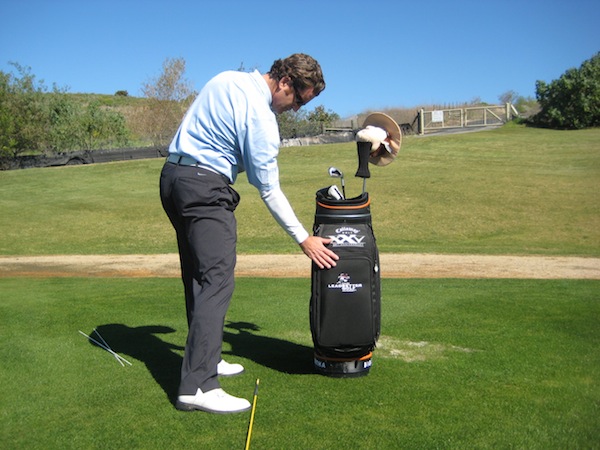

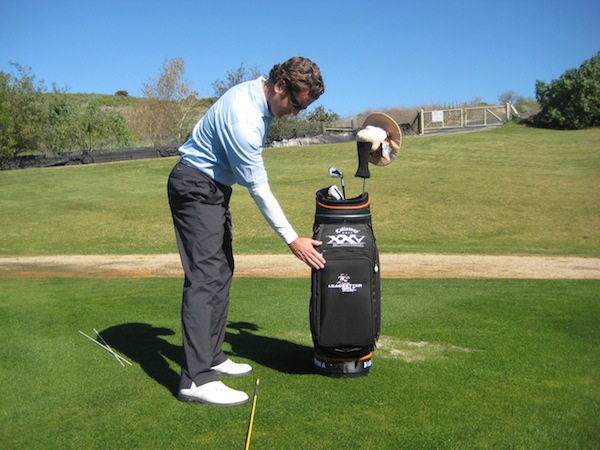
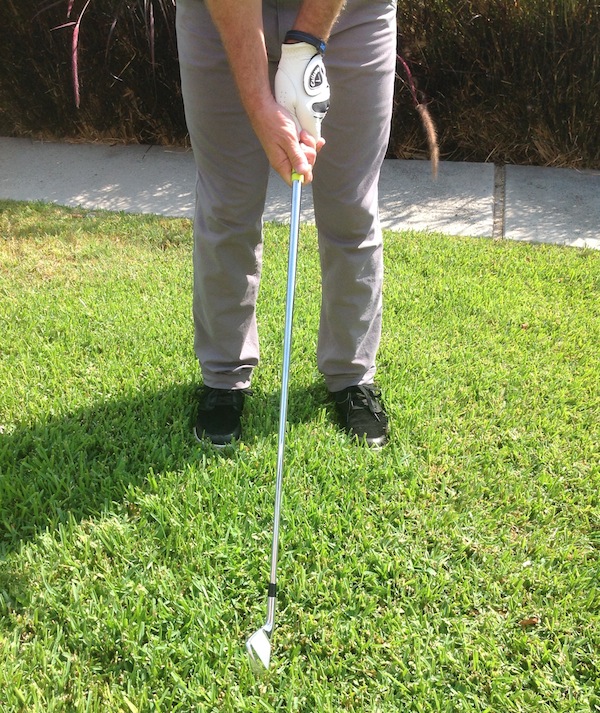
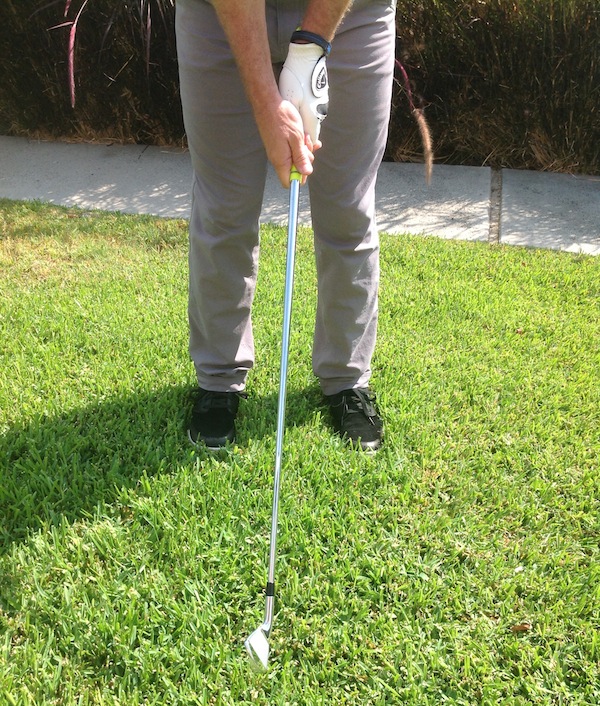
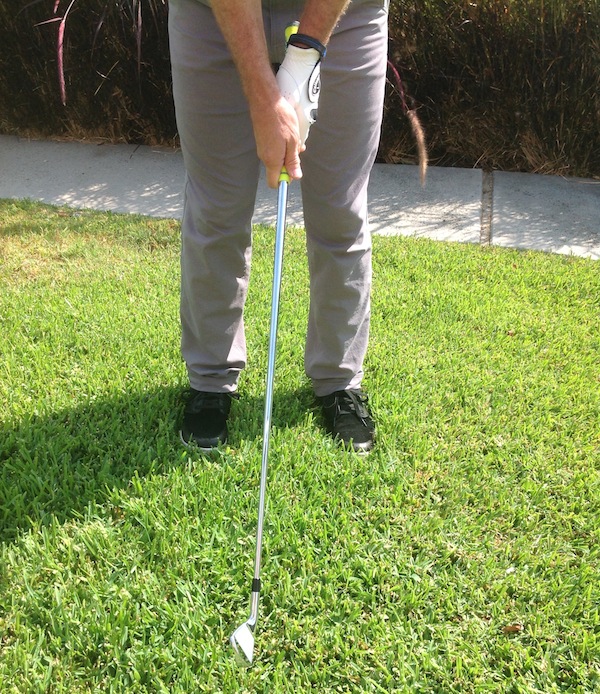











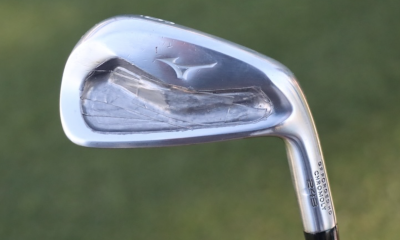

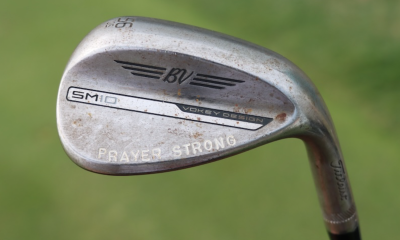

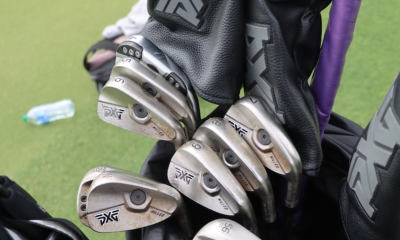

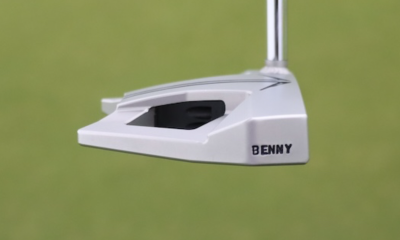

Amit
May 27, 2015 at 12:50 pm
Thank you! Finally someone has clarified these concepts in a way that is easy to understand. I started playing about 11 months ago and the “proper” way has never worked for me.
Hoping you can answer another question related to ball position/bottom of swing arc. Does ones release pattern (early/mid/late) also play a role in positioning the ball? If so, can you elaborate on how to think about the release patterns for the various hip and shoulder positions you describe.
I wish more golf instructors could explain concepts like you do. Thanks again!
Pingback: How eye dominance affects your golf swing | GolfClick.net | Blog
[email protected]
Oct 8, 2013 at 8:58 am
These are my favorite types of articles. Ones that explain how to personally adopt and tailor the instruction. I always seemed to strike better when playing with slightly closed club face. Now I know why. Thanks for this article……craig
BT
Sep 22, 2013 at 1:49 am
This is a great article. I’m a 5 HC with moderate swing speed. I have slow hips and have always been pretty square to the ball at impact. Through trial and error I figured out that a weak grip works best for me. I draw every club using a weak grip. There is so much confusion in golf instruction about the grip and how open the hips should be at impact. Many things you read tells you to turn hard with your body and use a strong grip. This simply does not work for a lot of people and I’m glad to see this article explaining what I had to figure out over many years on my own. After reading this I’m going to check my ball position to make sure it’s correct as well.
Anne
Sep 21, 2013 at 2:02 pm
Excellent article. Great visuals!!. Look forward to reading your next article.
Jay
Sep 21, 2013 at 12:48 am
Great info that makes a lot of sense. Getting better as a golfer comes from raising your golf IQ as high as possible and this is a great example of how even the basics like grip and ball position aren’t as basic as we think.
Mr Ted Cronk
Sep 19, 2013 at 7:57 pm
Correction; …’but had NOT really contemplated the relationship of the grip to both’.
Mr Ted Cronk
Sep 19, 2013 at 7:56 pm
Two thumbs up here. I’ve been grappling with ball position and body position but had really contemplated the relationship of the grip to both.
Appreciate this article. Clarification and illumination. Well done.
Ted
Joel
Sep 19, 2013 at 2:41 pm
So here is an interesting question. At what position do you put the golf bag in which to swing at? Assume neutral and in the middle of your stance? Or were your CURRENTLY line up the ball to identify a fault in the swing?
It seems like an interesting drill but were I’m at at the middle of my stance and were I’m at through impact depending on the club may be hugely different.
I’m not knocking the article in anyway, I think its an interesting idea.
Tim
Sep 20, 2013 at 2:07 am
Joel…great comments and observations! I would answer your post with the following.
1. Let’s define the bag position for this exercise to be executed like you are hitting a 7 iron. Over 80% of my Models…Touring Professionals, who have more neutral or proper technique than most of us :)…play the ball position for their 7 irons underneath their target ear. That’s our definition for a neutral starting point, or where we should place the bag for this exercise.
2. Most of our golf swings have a personality…whether you’re hitting your 7 iron, or your driver, the dynamics of your swing really don’t change that much. We see that all the time on TV. All of Tiger’s full swing motions look very similar. So while the club might change the address position and bottom of the swing arc due to a different lengthed golf club, the dynamics of our swing (in this case, how much our chest faces the target) stays very similar.
3. Unfortunately this exercise will not likely fix the other flaws we have in our golf swings. It simply identifies one very important component of the golf swing, our instinctive body rotation position on the downswing, and helps us maximize that dynamic motion to two important static pieces in our set up. We can, and still need to improve the other technical flaws in our golf swing. BUT, by matching up these important components in our golf technique, we eliminate the need for more athleticism in our golfing motion.
I hope I understood your comments. Feel free to add more if I’m way off base!
ryan
Sep 19, 2013 at 12:03 pm
Great tip. I would love it if you could do a video on this and post it on youtube. It would help people understand it better and have a video to go back to for a reminder every season. I really think this will make a great video.
Tim
Sep 20, 2013 at 1:28 am
I’ll see what I can come up with Ryan.
AJ Jensen
Sep 19, 2013 at 10:20 am
Interesting article. So much of golf how-to seems to be focused on “do it this way and no other,” rather than helping golfers discover ways to adapt their own individual style into the game.
Tim
Sep 20, 2013 at 1:27 am
I agree AJ…that’s one of the major quandaries we all face while trying to improve our golf games. The evil answer, there is no right answer. You can learn the more “Proper” way, or you can learn your own, personalized game. Both ways have produced Major Champions in the game’s history. Ultimately, instinctively, I believe we all play more of our own, personalized game of golf, with varying degrees of “Properness”. Unfortunately, the less “Proper” our technique, the more athletic we have to be to over come our “Unproperness”. Having said that, I believe every great golf champion has applied this information, and others like it, through trail and error, to their own golf game. The more you can apply personalized pieces of “medicine” to your golf game, the more you will execute golf shots in an instinctive manner. Under pressure, I think that’s what we’re all looking for. Quite the Catch 22 if I do say so myself! Good luck in finding your right mix.